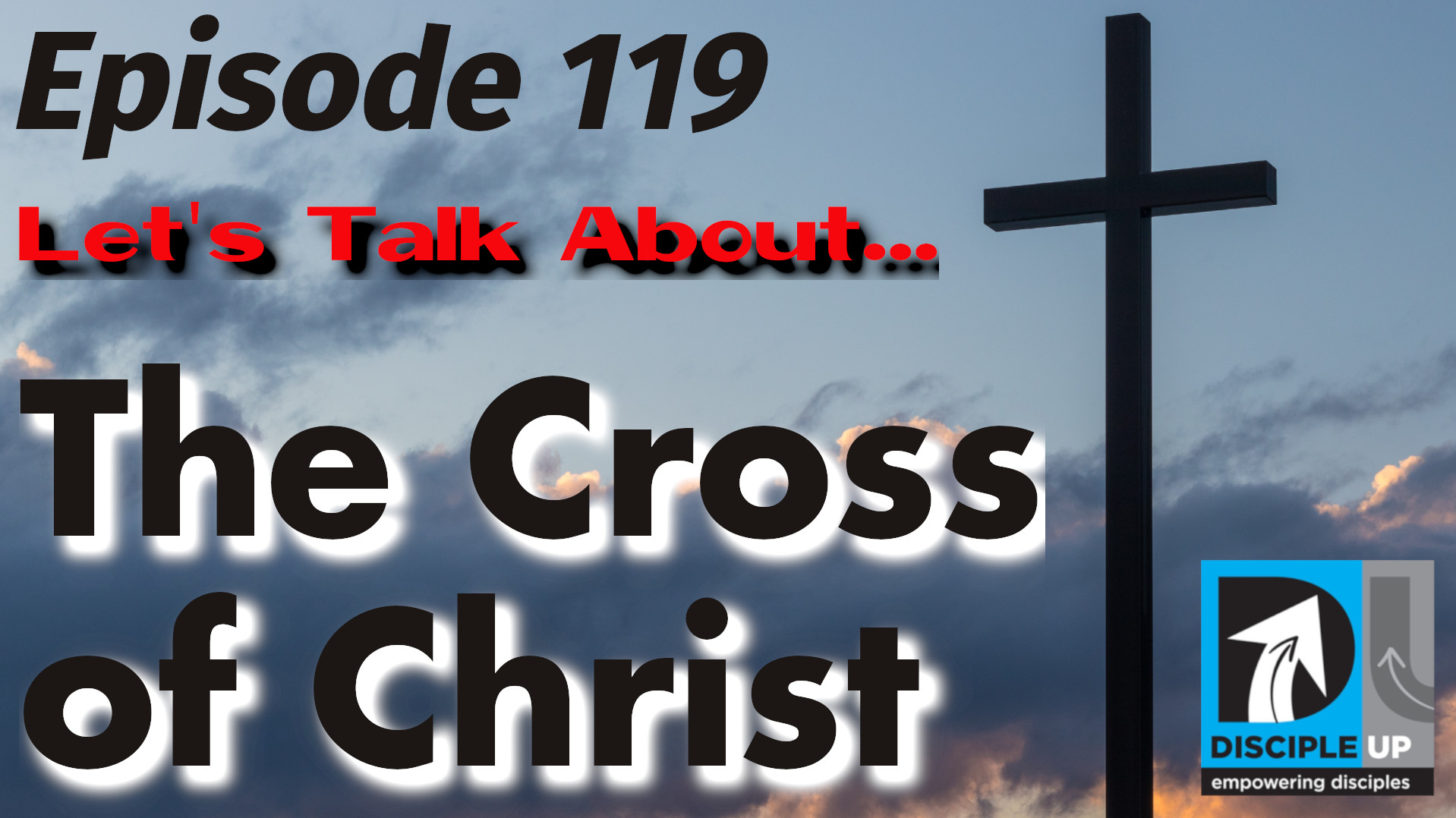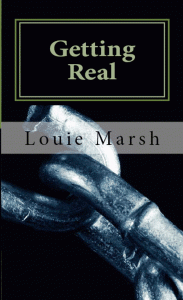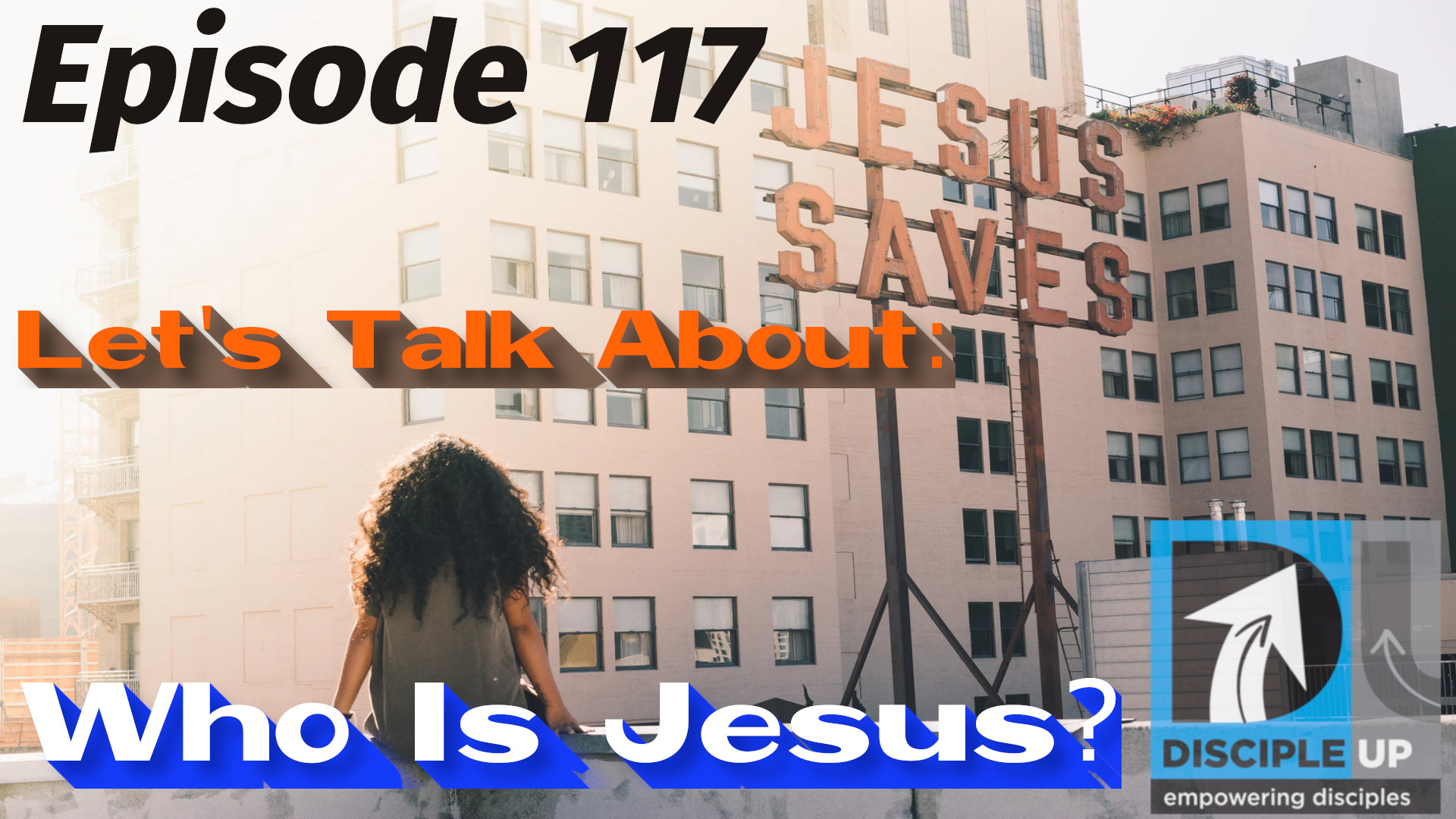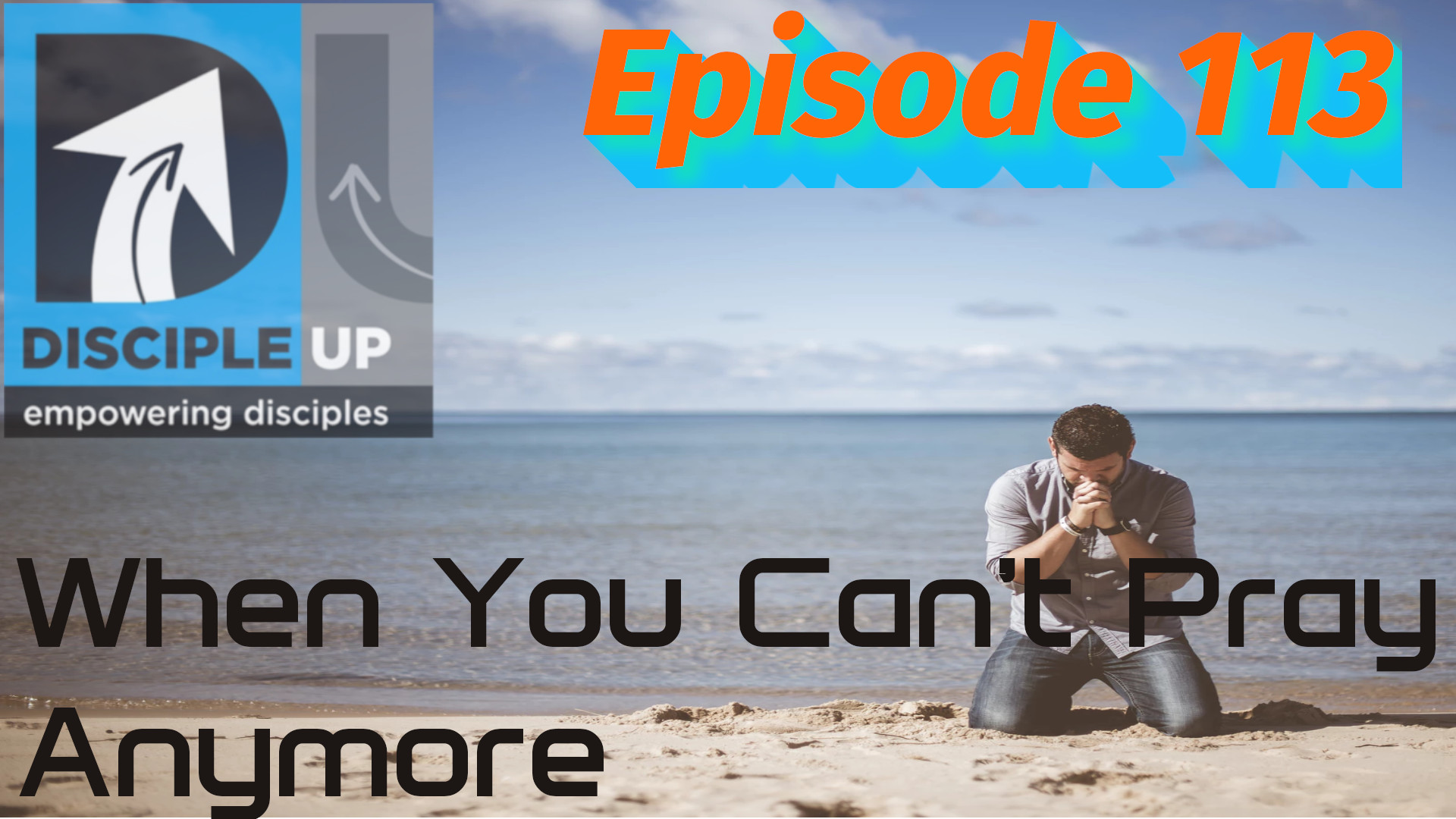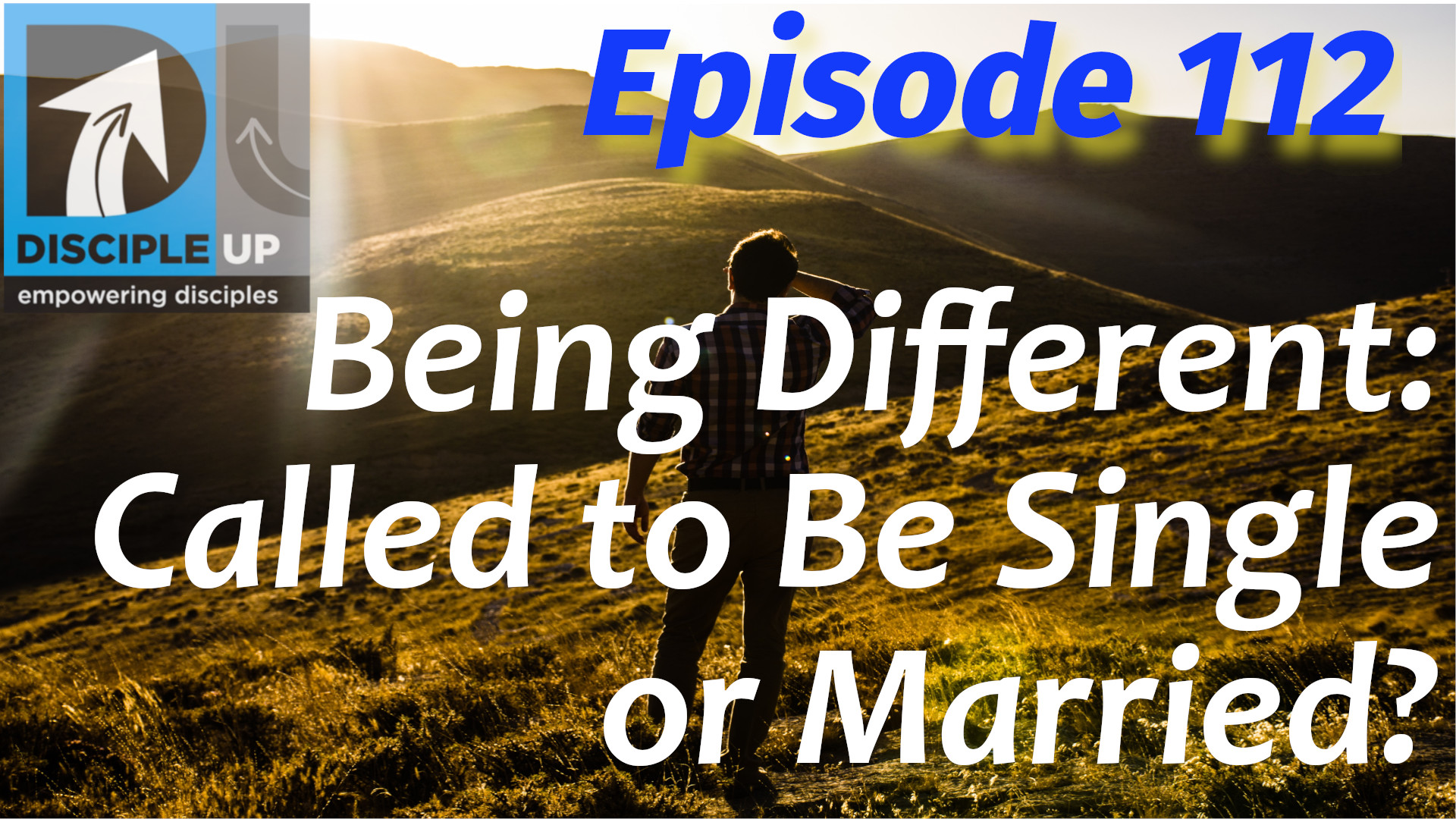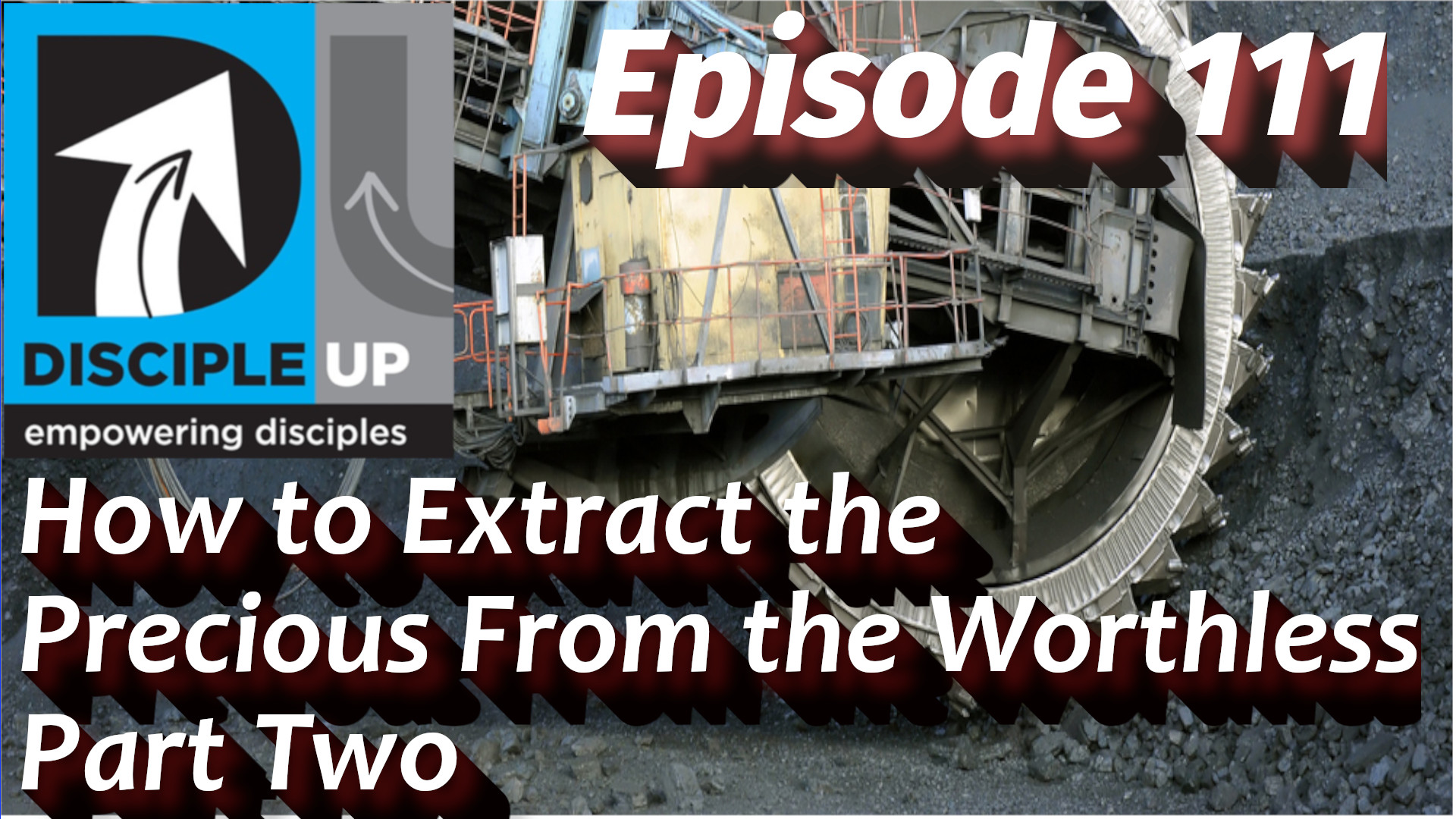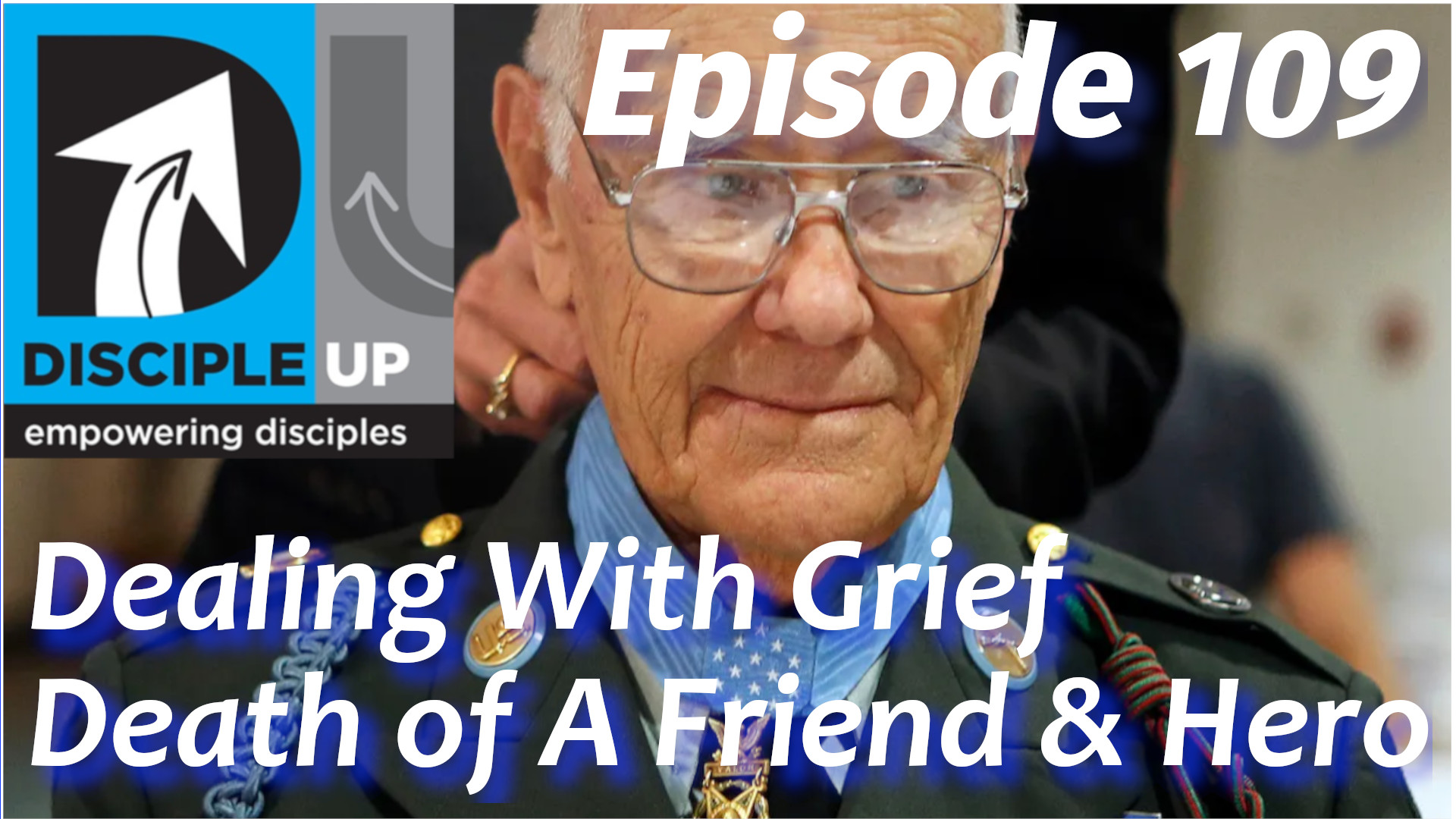Disciple Up #119 Show Notes
What’s So Important About the Cross?
By Louie Marsh, 7-31-2019
Introduction: The only way to comment publicly on the podcast is at the FaceBook page, facebook.com/discipleup. You can e-mail me at louie@discipleup.org.
Request for an upcoming episode I’m researching now.
Most of the information on today’s episode is taken from John Stott’s masterful book, “The Cross of Christ.” Link below.
The Centrality of the Cross
What part does the cross of Christ play in our Christian faith? Why did Jesus have to die on the cross, and why has the cross remained the central symbol of the Christian faith for over 2,000 years?
Christians agree that it was on the cross that Christ died to save our souls. But is it really central to our faith? Here’s what Paul said, For Christ didn’t send me to baptize, but to preach the Good News—and not with clever speeches and high-sounding ideas, for fear that the cross of Christ would lose its power. I know very well how foolish the message of the cross sounds to those who are on the road to destruction. But we who are being saved recognize this message as the very power of God. 1 Cor. 1:17-18 (NLT) [See also Gal. 5:11; 6:12,14; Phil. 2:8]
To Paul there is more to the cross than it’s use by God in redeeming mankind. He makes it central to his message and his life. As we begin our look at the cross of Christ we must start with attempting to discover why it is placed squarely at the center of our faith.
The Cross as a Sign and a Symbol
Every major group, movement, nation and religion has a visual symbol. Buddhism has the lotus flower and Islam the crescent. Ancient Judaism avoided a symbol for fear of making an idol, but modern Judaism has two symbols, the Star of David and the Menorah.
Secular states have symbols also. The Nazi’s had the swastika, the Soviet Union had the hammer and sickle and the New Age Movement today uses the rainbow. Today almost every business or group has its own symbol (called a logo usually). This includes Christ’s Church on the River!
In the early church the Christian symbol wasn’t the cross. The earliest symbol was the peacock, which symbolized immortality. The first Christians also used a dove, the athlete’s victory palm and of course the fish. Yet gradually the cross replaced all these. (It also precluded others from rising such as the manger, the empty tomb, etc.)
Instead the cross was chosen. It’s two bars were already a cosmic symbol from antiquity of the axis between heaven and earth. When the church chose the central truth of the faith to commemorate they chose neither Christ’s miracles nor teachings, they didn’t even choose His resurrection! Instead they chose the cross. (By the way, just in case you’re wondering, the crucifix doesn’t seem to have been used before the 6th century AD.)
How they used the Cross
From the second century onward early Christians made the sign of the cross on themselves and others. Early Church Father Tertullian (A.D. 200) wrote this,
“At every forward step and movement, at every going in and out, when we put on clothes and shoes, when we bathe, when we sit at table, when we light the lamps, on couch, on seat, in all the ordinary actions of life, we trace upon the forehead the sign.”
Hyppolytus wrote The Apostolic Tradition (215 A.D.) about the traditional rites of the church. He recommended in private prayer to, “imitate him always, by signing the forehead sincerely; for this is the sign of his passion.”
It seems clear then that the sign of the cross was intended to identify and sanctify each act belonging to Christ. In the early church the cross of Christ was ever present in the life of the believer.
The Surprise of the Cross
It is surprising that the church chose the cross as their symbol when we remember the horror it was regarded with in the ancient world.
Cicero wrote, “To bind a Roman citizen is a crime, to flog him is an abomination, to kill him is almost an act of murder; to crucify him is – what? There is no fitting word that can possibly describe too horrible a deed…the very cross should be far removed not only from the person of a Roman citizen, but from his thoughts, his eyes, his ears.”
The first surviving picture of the crucifixion of Jesus is a caricature found on Palatine Hill in Rome, in a school for Imperial Pages. A crude drawing shows stretched on a cross a man with the head of a donkey. To the left stands another man with one arm raised in worship. Scribbled underneath are the words, “Alexamenos worships his God.”
In the light of all this why did the church choose the cross for its main symbol? Only one answer can suffice – that the centrality of the cross originated from the Lord Jesus Himself.
Scripture and the Cross
The centrality of the cross began early in Christ’s ministry. He then began to teach them that the Son of Man must suffer many things and be rejected by the elders, chief priests and teachers of the law, and that he must be killed and after three days rise again. He spoke plainly about this, and Peter took him aside and began to rebuke him. (Mark 8:31-32) The word plainly means “with freedom of speech or openly.” In a parallel passage (Matthew 16:21-23) the cross was so important that Jesus called Peter “Satan” when he urged Jesus to avoid it!
Jesus repeats himself in Mark 10:32-34. By saying the Son of Man will suffer and die Jesus daringly combined the two images of the Messiah in the Old Testament; the Suffering Servant of Isaiah 53 and the Reigning Son of Man of Daniel 7. Jesus said that He is both and will die before He reigns.
Jesus emphasis on the cross is also reflected in the amount of space the Gospels give to their accounts of His passion. It takes up between one-third and one-fourth of the Synoptic Gospels, and almost one-half of John!
The Apostles View of the Cross
How the Apostles viewed the cross can be discovered in their use of the word “tree.” Peter used it in Acts 5:30 and Paul used it in Acts 13:29.
Why is this so important? Because of what the book of Deuteronomy says, If a man guilty of a capital offense is put to death and his body is hung on a tree, you must not leave his body on the tree overnight. Be sure to bury him that same day, because anyone who is hung on a tree is under God’s curse. You must not desecrate the land the Lord your God is giving you as an inheritance. Deut. 21:22-23
The Apostles deliberately drew to people’s attention that Jesus died under a curse! Why on earth would they do that?
Christ redeemed us from the curse of the law by becoming a curse for us, for it is written: “Cursed is everyone who is hung on a tree.” (Galatians 3:13) He himself bore our sins in his body on the tree, so that we might die to sins and live for righteousness; by his wounds you have been healed. (1 Peter 2:24)
These Scriptures show that the ancient people guessed right about the cross. The cross of Christ indeed became the nexus of heaven and earth! For on the cross God met and dealt with man’s central problem – sin! Jesus did this by bearing our sins in His body!
Why Did Christ Die?
The standard Christian answer to this question is four fold: 1) He died for us (Rom. 5:8). Professor Martin Hengel has shown that the concept of a person dying voluntarily for his city, family, friends, the truth or to pacify the gods was wide spread in the Roman world. They even had a special word for it. That’s one reason they so quickly understood the Gospel.
2) He died to bring us to God (1 Peter 3:18). 3) Christ died to forgive our sins (1 Cor. 15:3). 4) Christ died our death, (Rom. 6:23) He died so that we might live.
All this means that the simple statement Christ died for our sins says a lot more that it appears to on the surface. It says that Jesus, though sinless and not needing to die, did die the death we deserve to die for our sins.
Do these answers fit the facts, as we know them from the Gospels? Or are they something cooked up later to explain what happened to Jesus? To find out let’s look at two events beginning with Maundy Thursday and the institution of the Lord’s Supper, and Christ’s agony in the Garden of Gethsemane.
The Last Supper
When I read about the Last Supper the first thing that stands out to me is that Jesus doesn’t spend the evening sadly looking back over His life and lamenting the fact He is going to die so young. Instead He look forward to His death as something that must happen and must be remembered!
Here in the only regular commemorative act ever authorized by the Lord Jesus, He is concerned not about His birth, miracles or teachings, but His death. Jesus is saying to us that above all else we must not forget His death and what it means!
According to Matthew and Paul Jesus said that His death and the shedding of His blood would forgive sins and bring about a new covenant (relationship) between God and man.
The Old Covenant was brought about by blood. Then he took the Book of the Covenant and read it to the people. They responded, “We will do everything the Lord has said; we will obey.” Moses then took the blood, sprinkled it on the people and said, “This is the blood of the covenant that the Lord has made with you in accordance with all these words.” ( Exodus 24:7-8)
Later the Prophet Jeremiah foretold a New Covenant, “The time is coming,” declares the Lord, “when I will make a new covenant with the house of Israel and with the house of Judah. Jeremiah 31:31 (See Jer. 1-34 for the whole picture) Six centuries after this prophecy Jesus said that His blood must be shed to bring this New Covenant into being.
The Lord’s Supper was an advance dramatization of Christ’s death. It is designed in such a way that everyone in the room is a participant! No one is a spectator – everyone must get involved. To take part in it you must personally take inside of yourself the bread and the cup. This symbolizes the necessity of personally making a choice about Christ.
Jesus said to them, “I tell you the truth, unless you eat the flesh of the Son of Man and drink his blood, you have no life in you. Whoever eats my flesh and drinks my blood has eternal life, and I will raise him up at the last day. For my flesh is real food and my blood is real drink. (John 6:53-55)
The Garden
The Gospel accounts of Jesus in the Garden use some very forceful words to describe what happened there. Luke says Jesus was in “anguish,” the Greek word means “Appalled reluctance.” Matthew and Mark use the word “troubled,” which means a “loathing aversion.”
Jesus said He was “overwhelmed” with “sorrow.” Mark says He was “deeply distressed,” a phrase that literally means “horror struck!”
What caused these very strong reactions? The Cup. What was The Cup? Some say that it was Christ’s fear of physical death. To that I say – No way Jose!! Christ who knew that there life after death, who had brought people back from death itself, could not have feared it.
So what caused this reaction? In the Old Testament The Cup was a phrase often used to refer to God’s wrath. As a nation or people sinned the cup would get fuller and fuller until at last it was filled up. Then God in His righteous wrath would pour out His judgment until the cup was empty and justice was satisfied.
Jesus knew that He was going to take upon and within Himself all His Father’s wrath for all the sins of the world! This knowledge that He – a sinless being – would experience all sin – caused Him such horror. He foresaw that this would separate Him from His Father for a moment – and that in Paul’s words, “For God made Christ, who never sinned, to be the offering for our sin, so that we could be made right with God through Christ.” (2 Cor. 5:21, NLT)
Yes The Cup had to be drunk. People often say that God can do anything – but that’s not true. According to the Bible He cannot lie, cheat or fail to fulfill His Word. He also could not avoid the need for a sacrifice for our sins. His love drove Him to make the greatest sacrifice of all – Jesus dying on the cross for your sins and mine!
Why the Cross?
There are many theories about why God chose to use the cross to forgive us. Was it to satisfy the devil, as the early Greek Fathers (church leaders) thought? Was it to satisfy the Law as the early Latin Fathers thought? Or did God’s sense of honor and justice as Anselm taught in the 11th century?
While there is some truth in each of these ideas, the plain fact is that the cross is necessary because it arises from within the nature of God Himself. So how and why does God react to sin? The Bible uses several words that will help us understand this question.
The first one is “provoked”. In Judges 2:12-13; 1 Kings 15:30, 21:22 among others places we see this word used. It expresses the inevitable reaction of God’s perfect nature to evil. He is never provoked without reason and must react this way or He would cease to be God!
The second word is “burning.” It’s used in Joshua 7:1, 23:16; Judges 3:7-8 & Hosea 8:5 and many other places. It’s when God is provoked to anger that He is said to burn with anger. (See 2 Kings 22:17)
So there is something in God’s essential moral being which is provoked by evil, which is ignited by it and that burns until the evil is consumed.
Our third and final word is “satisfaction.” The Hebrew word means “to be complete, at an end, finished, accomplished, spent.” It’s found in Ez. 7:8 and Lam 4:11 where God is described as about to “pour out” and “spend” His wrath. Notice that pouring out and spending go together. That which is poured out can’t be gathered again, that which is spent is finished.
So, to sum this up, God is provoked to anger over sin, once kindled His anger burns and is not easily quenched. At last He unleashes it, pours out the cup, and spends it.
But this isn’t a complete picture because it leaves out the background of God’s wrath. What’s that? Believe it or not it’s God’s love!
Love and Wrath
In this section I’ll be using human figures of speech here, because I don’t have any others to use! Does the Almighty really have problems? Not from His perspective I’m sure, but from ours He’s does! So I’m talking this way so that it will, hopefully, make sense to us mortals!
God’s problem in dealing with humanity is described in Hosea 11:
“When Israel was a child, I loved him,
and out of Egypt I called my son.
But the more I called Israel,
the further they went from me.
They sacrificed to the Baals
and they burned incense to images.
It was I who taught Ephraim to walk,
taking them by the arms;
but they did not realize
it was I who healed them.
I led them with cords of human kindness,
with ties of love;
I lifted the yoke from their neck
and bent down to feed them.
“Will they not return to Egypt
and will not Assyria rule over them
because they refuse to repent?
Swords will flash in their cities,
will destroy the bars of their gates
and put an end to their plans.
My people are determined to turn from me.
Even if they call to the Most High,
he will by no means exalt them.
“How can I give you up, Ephraim?
How can I hand you over, Israel?
How can I treat you like Admah?
How can I make you like Zeboiim?
My heart is changed within me;
all my compassion is aroused.
I will not carry out my fierce anger,
nor will I turn and devastate Ephraim.
For I am God, and not man–
the Holy One among you.
I will not come in wrath. Hosea 11:1-9
Paul expresses this dual nature of God, “he did it to demonstrate his justice at the present time, so as to be just and the one who justifies those who have faith in Jesus.” (Romans 3:26) This dilemma between justice and grace is always worked out in a way that is in perfect accord with both love and holiness.
The cross then is the event in which God reveals His holiness and love simultaneously. The cross is the only place where we can see that God’s holiness and love are equally infinite. Emil Brunner wrote this daring sentence, “The wrath of God is the love of God.”
It might help us understand this if we think about why we discipline our children. We do it out of love – but they don’t see it that way do they? Have you ever looked at God’s wrath like a child?
Well you don’t have to any longer because God’s wrath against your sin was poured out, and spent on, the cross of Christ! There isn’t any left to pour on you – it’s was spent on the cross! That’s what the whole New Testament means as Paul points out in Romans, “But now God has shown us a different way of being right in his sight—not by obeying the law but by the way promised in the Scriptures long ago. We are made right in God’s sight when we trust in Jesus Christ to take away our sins. And we all can be saved in this same way, no matter who we are or what we have done.”
“For all have sinned; all fall short of God’s glorious standard. Yet now God in his gracious kindness declares us not guilty. He has done this through Christ Jesus, who has freed us by taking away our sins. For God sent Jesus to take the punishment for our sins and to satisfy God’s anger against us. We are made right with God when we believe that Jesus shed his blood, sacrificing his life for us. God was being entirely fair and just when he did not punish those who sinned in former times. And he is entirely fair and just in this present time when he declares sinners to be right in his sight because they believe in Jesus.” (Romans 3:21-26)
The Achievement of the Cross
What did Christ’s death on the cross achieve? To really answer that question we’ll need to look at the four main images that the New Testament uses of Salvation. They are drawn from four different places: the shrine, the market place, a court of law, and the home.
Propitiation
I know, I know, this sounds more like a disease than anything else doesn’t it? Well it’s isn’t! It comes from the ancient temples and shrines. It means to appease or to pacify anger. Is God an angry God who demands bribes and gifts to forgive us? No!
Propitiation is necessary because as we’ve seen sin arouses God’s wrath. Pagan religion, and in some ways legalistic Christianity, say that we must provide propitiation for our sins. But the Bible doesn’t say that! In fact it says the exact opposite!
In the Old Testament God provided the Law – “for the life of any creature is in its blood. I have given you the blood so you can make atonement for your sins. It is the blood, representing life, that brings you atonement.” (Leviticus 17:11, NLT)
In the New Testament God presented Jesus to save us as we saw in Romans 3:25.
Dr. David Wells wrote, “man is alienated from God by sin and God is alienated from man by wrath. It is in the substitutionary death of Christ that sin is overcome and wrath averted, so God can look on man without displeasure and man can look on God without fear.”
Redemption
Our next word comes from the ancient market place. The word literally means, “a ransom or price of release,” and was used of buying or setting free slaves.
Just was have we been redeemed from? “He gave his life to free us from every kind of sin, to cleanse us, and to make us his very own people, totally committed to doing what is right.” (Titus 2:14, NLT) Moral slavery, guilt, God’s wrath etc.
We must never forget the great price Christ paid to redeem us. What was that price? First his incarnation (when he became a man, Phil. 2:5-7). Secondly his shed blood on the cross (I Peter 1:18-19).
We’re looking at these things in a logical manner. Propitiation inevitably comes first, because until the wrath of God is appeased (that is until His love has found a way to avert his anger) there can be no salvation for us. Next, when we are ready to understand the meaning of salvation we begin negatively with redemption. Which is our rescue, at the high price of Christ’s blood, from sin and death.
Justification
This third word is taken from the law court. Justification is the opposite of condemnation, and both are verdicts of a judge. Justification is the positive counterpart of redemption. It bestows on us a righteous standing before God. J.J. Packer wrote: “Justification by faith appears to be the heart of God’s saving grace…like Atlas, it bears a world on its shoulders.”
The Source of our Justification according to Romans 3:24 is God’s grace. “…and are justified freely by his grace through the redemption that came by Christ Jesus.” (Romans 3:24)
Grace means something freely given that brings about well being. Therefore self-justification is impossible (Rom. 3:20) and so God does it for us (Rom. 3:21-25). This is grace, a free gift that brings good.
The Ground of our Justification. We are justified by Christ’s blood,
“And since we have been made right in God’s sight by the blood of Christ,” (Romans 5:9, NLT). The blood shed on the cross allows God to make us right with him. Therefore justification isn’t amnesty or an overlooking of guilt, or a pardon without principle. It’s not some plea bargain with God. Justification is an act of justice, a gracious justice, but justice nonetheless.
The Means of our Justification, is faith. “So we are made right with God through faith and not by obeying the law.” (Romans 3:28, NLT). But faith in what? Faith and grace belong together. Since faith’s only function is to receive what Grace freely offers, you cannot split them apart. So we are made right with God by our faith in his gracious sacrifice of Christ on the cross.
Reconciliation
The fourth word or image of salvation is very popular because it’s so personal. We’ve left the temple and the market place and the court of law behind, and now we’ve come home.
“And since we have been made right in God’s sight by the blood of Christ, he will certainly save us from God’s judgment. For since we were restored to friendship with God by the death of his Son while we were still his enemies, we will certainly be delivered from eternal punishment by his life. So now we can rejoice in our wonderful new relationship with God—all because of what our Lord Jesus Christ has done for us in making us friends of God.” (Romans 5:9-11, NLT)
To reconcile means to restore a relationship, or to renew a friendship. So this word presupposes an original relationship with God, which was broken, and that Christ recovered for us. Reconciliation is the opposite of alienation.
It’s linked to justification in Romans 5:1: “Therefore, since we have been made right in God’s sight by faith, we have peace with God because of what Jesus Christ our Lord has done for us.” (NLT) Only after you have a right standing with God can you have peace through reconciliation.
Reconciliation is the fruit of justification. Peace is a synonym for, and a result of, reconciliation. It gives us peace and a personal relationship with God. According to Ephesians 2:13-18 it helps to bring us into peaceful and close relationships with those around us, especially those in the church.
How did this happen? According to 2 Cor. 5:18-22 it took place on the cross. “All this newness of life is from God, who brought us back to himself through what Christ did. And God has given us the task of reconciling people to him. For God was in Christ, reconciling the world to himself, no longer counting people’s sins against them. This is the wonderful message he has given us to tell others. We are Christ’s ambassadors, and God is using us to speak to you. We urge you, as though Christ himself were here pleading with you, “Be reconciled to God!” For God made Christ, who never sinned, to be the offering for our sin, so that we could be made right with God through Christ.” (NLT)
God was in Christ and together they reconciled us to them! God took the initiative, and reached out to us when we couldn’t reach out to him!
Reconciliation is finished! All we have to do is accept it!
What Does All This Mean To Me?
The first thing that the cross assures us of is that God is not mad at you – ever! His wrath’s been placated by the cross. He’s now free to love us completely and unconditionally because of the cross. We then should be free from fear (1 John 4:16-18).
The Death of False Guilt
False Guilt will die when we understand and take this to heart. False Guilt is feeling guilty over something that you shouldn’t feel guilty about. If God has not condemned us how can we condemn ourselves?
And even if I am guilty the cross still rescues me! Justification teaches us that we are legally and morally in the clear – there’s no reason to feel guilty. Reconciliation teaches us that God’s not holding our sins against us- we have a restored relationship with Him! It also teaches us that we don’t have the right to refuse to forgive someone God has forgiven!
This is the real answer to guilt – this and not psychology – holds the answers we need!
The cross says that God wants you! He paid an unbelievable price for you. This doesn’t prove how wonderful you or I are – it proves how wonderful He is! He paid this price in spite of knowing, far better than we do, what terrible sinners we are!
And finally the cross teaches us that God’s not going to give up on us! After everything He went through to propitiate His anger and to ransom us from sin – there’s no way He’s gonna quit on us now! (See 1 Peter 1:3-6)
Thank God for the Cross!
LINKS:
The Cross of Christ by John Stott – shorturl.at/GKZ56
Please Get In Touch!
Email – louie@discipleup.org

Check out the Disciple Up Facebook page:
My books –

